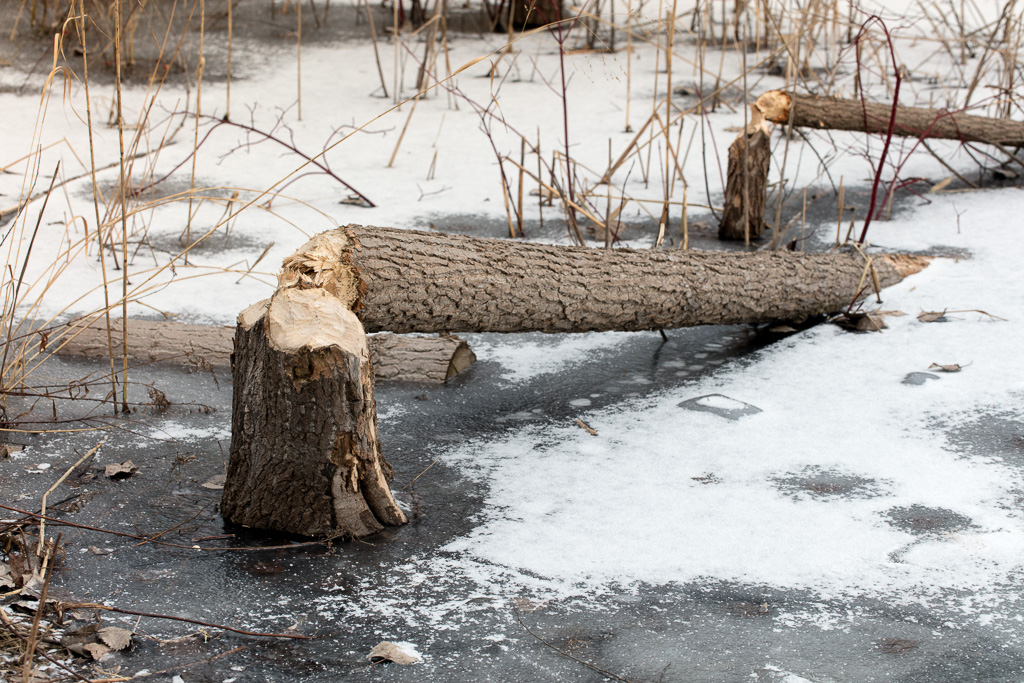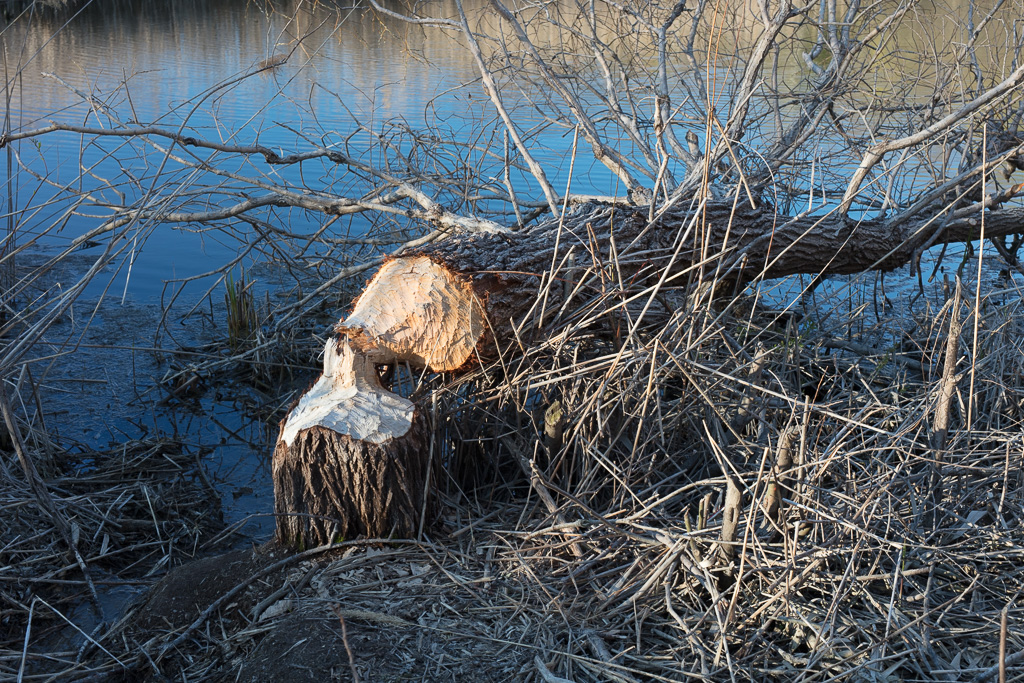It’s a strange world I inhabit that I learn about what’s happening locally (I live in Toronto) by reading about it in a Manchester-based newspaper. On May 14th, I read in The Guardian about a population explosion in Canada. The beaver, our national animal, is making a comeback and, since its habitat overlaps ours, it is demanding some of the same resources. We’ve caught beavers stealing fence posts, biting through telecom cables, even trying to ride Toronto’s subway. To be honest, I didn’t need a newspaper to tell me this; the evidence is everywhere.
For at least a year now, every time I go for a walk to the Evergreen Brick Works, I note that another tree has come down. Formerly the Don Valley Brick Works, the site was first quarried in 1889. More than a century later, with all its usable clay exhausted, the Toronto Conservation Authority began the process of filling the quarry and reestablishing the site as wetland. The excavation for the Scotiabank Tower (the deepest foundation in Canada) was used as fill. On top of this, the Conservation Authority created three linked ponds surrounded by grasses, scrub and young trees. Over the last 25 years, it has become home to many different species of birds. I’ve spotted finches, redwing blackbirds, great blue herons, great egrets, red tail hawks, mallard ducks, Canada geese, jays, woodpeckers, robins, etc. I’ve also spotted foxes, coyotes, the ubiquitous raccoons, deer, muskrats, and beavers.
A year after I noted the first downed tree, I’m startled to find that beavers have felled perhaps half of all the new growth. My first reaction is indignation: the beavers are spoiling everything. Then I remember that beavers were here long before us and, really, we’re the ones who have spoiled everything. When the quarry was first excavated, it exposed a local geological record going back 130,000 years, right down to a bedrock of shale that, itself, is probably half a billion years old. Near the bottom, at the 130,000 year mark, the geologist, Arthur Philemon Coleman, discovered the tooth of a giant beaver. Long before humans ever set foot on this continent, beavers were chawing away on trees and reworking the environment. Who knows. Maybe the beavers wreaking havoc today are descendants of those prehistoric giants.
Although the beavers are destroying the trees and undoing human efforts, it’s reasonable to suppose that, if left alone, they might do more to promote reclamation of wet lands in the Don Valley than anything we could accomplish on our own. Perhaps we should treat them as collaborators.

